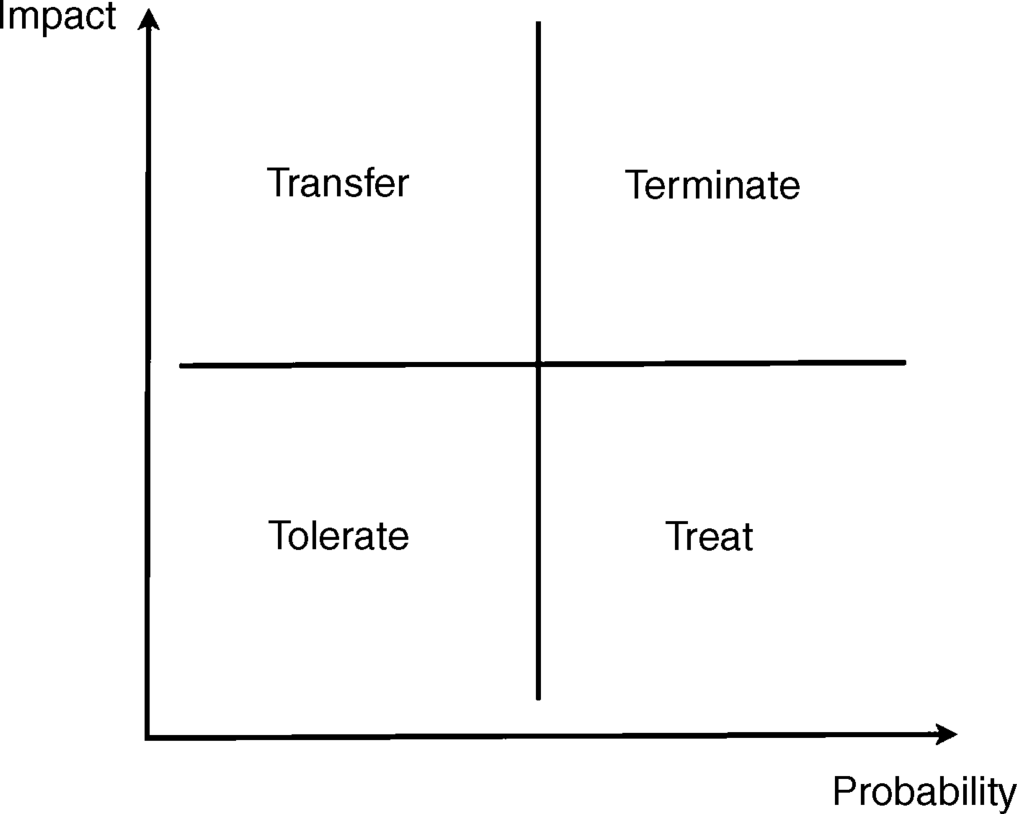The “4Ts” Approach – Answer to the Exercise
When I introduce the “4Ts” exercise on my courses I start with the blank Boston Matrix set out in Diagram 4.2 above and ask the delegates to complete it by inserting the appropriate “T” into each. Each “T” goes in one box only. During the subsequent discussion, we progress round the Matrix as described below, to arrive at the completed answer, shown in Diagram 4.3 below.
Diagram 4.3 The “4Ts” approach

(a) Bottom Left-Hand Quadrant = Tolerate
We begin in the bottom left-hand corner of the matrix. Most of my delegates will have the correct answer for this quadrant, which is to tolerate risk. However, I always give them the following caveat at this point. Although it is relatively easy to see in the nice academic environment of the classroom that low probability, low impact risks should be tolerated and accepted by business, I would be very confident that if I were to spend time in any of the businesses represented in the room I would find examples of this not happening, of situations where the business spends valuable time, energy and resources trying to manage things that do not matter. There are practical challenges in this quadrant for all managers in terms of optimising the use of business resources – process re-engineering is often difficult because individuals and institutions are resistant to change. However, there are big opportunities ...
Get Managing Fraud Risk: A Practical Guide for Directors and Managers now with the O’Reilly learning platform.
O’Reilly members experience books, live events, courses curated by job role, and more from O’Reilly and nearly 200 top publishers.

